Winter preparations are well underway on the golf course. In addition to the usual tasks of bringing in accessories, installing snow fence, edging, cleaning up leaves, giving the golf course its final mowing of the year, and applying fungicides for winter diseases, we have been especially busy on giving putting greens a thorough treatment before buttoning them up for the winter.
After final mowing and cleanup, we over seeded putting greens using an implement called a Maredo Over seeder. The unit, which is something we just acquired this past year, does an excellent job in efficiently spiking and metering bentgrass seed.
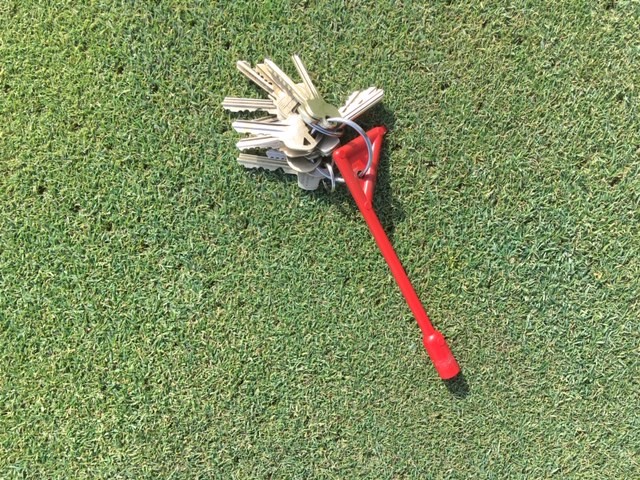
18 Green 10-18-2019
Note the small spiker holes around the keys. These holes provide the perfect seedbed for the application of bentgrass seed and the unit uniformly meters the bentgrass seed-which can be difficult to work with due to it being as fine as dust. This is what is called a dormant seeding-this seed will not germinate this fall due to cold temperatures but will instead overwinter and be in position to germinate in the spring. This is a new practice that we will be implementing as part of our winter preparations in the future. This practice is mostly an insurance policy in the event that we have winter turf loss but introducing bentgrass seed into the putting surface is never a bad thing and will assist some of the weaker areas on greens next year. After the overseeding, we applied what are commonly referred to in the industry as winter chemicals with a spray rig. This mix consists of fungicides for the control of snow mold diseases and a calcium supplement to add to the turf’s winter hardiness. Winter chemicals are applied to greens, tees, and fairways. Once we allow this application to set up for a day, we then move on to topdressing greens with a layer of sand.
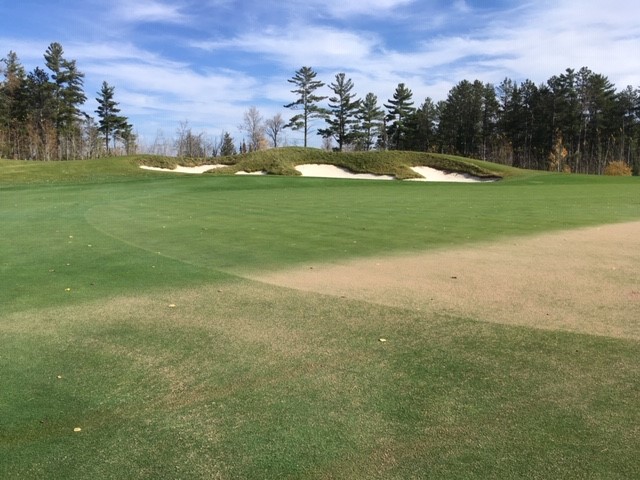
17 Green 10-18-2019
Sand topdressing as part of winter preparations is an age old practice that offers many benefits including protecting the turf from winter exposure and smoothing out any old ballmarks or any other imperfections in the putting surface. Adding topdressing sand to a turf surface also allows us to continue to dilute the thatch (old stems and roots) layer so that greens can remain firm and drain well. A relentless topdressing program also allows us to get away from core aerifying which is, frankly, a labor intensive mess that, while necessary at times, is best minimized. We do, however, aerify using solid tines.
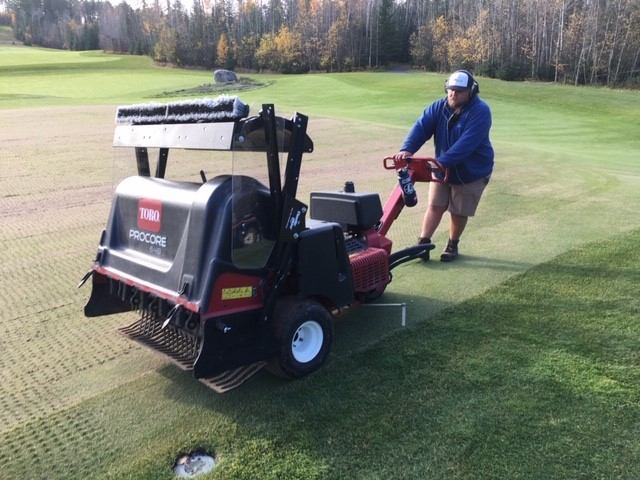
Olaf Walkky 5 Green 10-18-2019
We aerify immediately after topdressing putting greens. Aerifying after topdressing allows us to avoid creating ruts from running a heavy topdressing on top of a soft, freshly aerified putting surface. The vibration created by the aerifier also helps to work the sand into the putting surface.
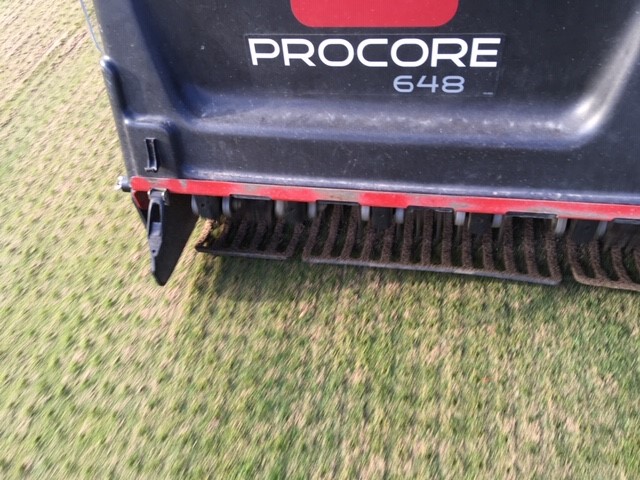
5 Green 10-18-2019
This year we used our Toro 648 aerifier with 5” long 3/8” wide solid tines with 2” by 2” spacing. We are very pleased with the result as these tines did a great job in alleviating compaction in the top end of the soil profile with minimal disruption. An added benefit to this process is that in the event we get excessive rains (which we will), these holes should provide an abundance of channels for water to leave the putting surface before freezing. We are doing what we can to avoid the accumulation of ice on putting surfaces.
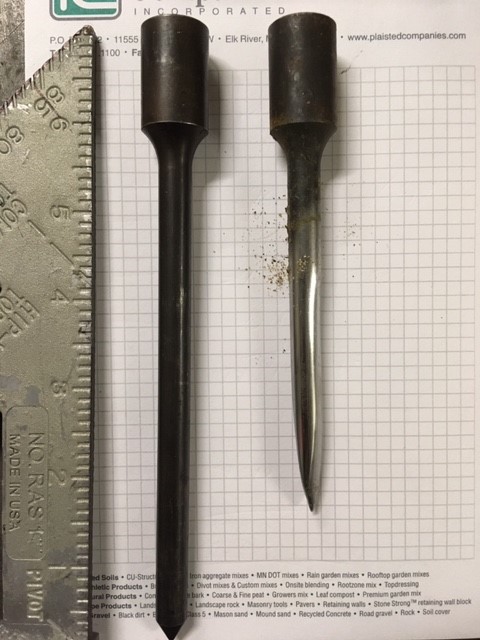
Solid tines-Pre and Post Aerifying 10-21-2019
The wear that these tines exhibit is pretty cool after we made an estimated 6,272,640 holes on putting greens (I did the calculation). Note the new tine compared to the tine that just participated in the making of 261,360 holes. In retrospect, we probably should have replaced that tines after the first 9 greens or so but the old tines were still penetrating to 3.5” on the last few greens which was adequate for what we are trying to do. Something to keep in mind for next year.
Having open holes going into winter can be a little scary since we do have the potential of subjecting greens to desiccation (drying out) in the event we have a dry winter with no snow cover. We mitigate this risk, however, by covering greens as the final step in our winterizing process. And, honestly, we rarely if ever have a winter without snow cover. My experience, after 17 years on this site, is that ice damage is a greater likelihood than winter desiccation-and is more damaging.
The final step before covering greens is a thorough rolling of putting greens. This helps to smooth out, firm up, and work the topdressing sand into the turf surface.
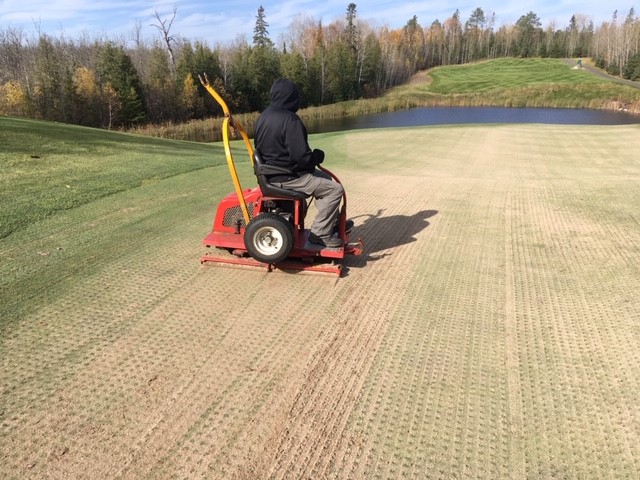
Kevin Lynch 3 Green 10-18-2019
All in all, a pretty thorough process that should help to ensure good putting surfaces for the 2020 golf season.
Vincent Dodge

